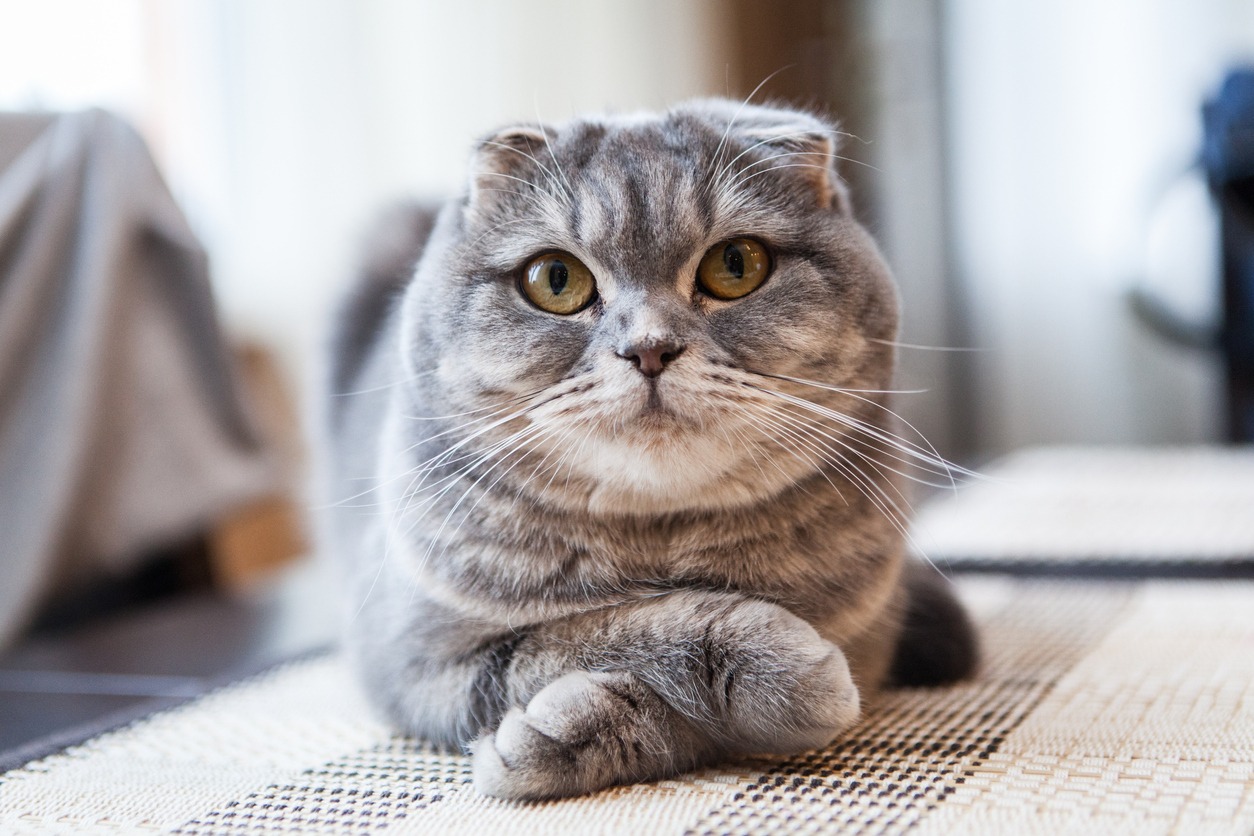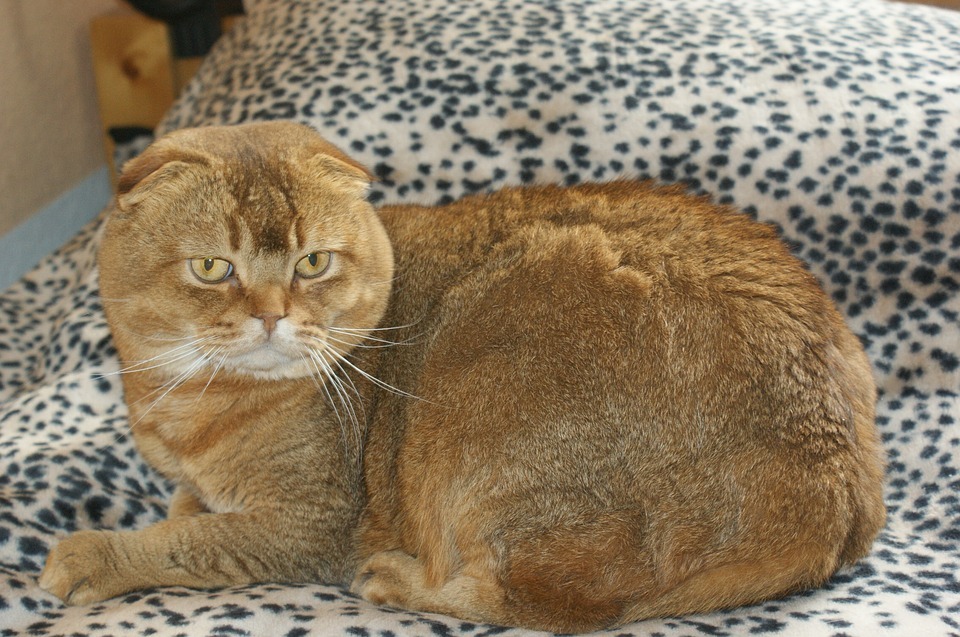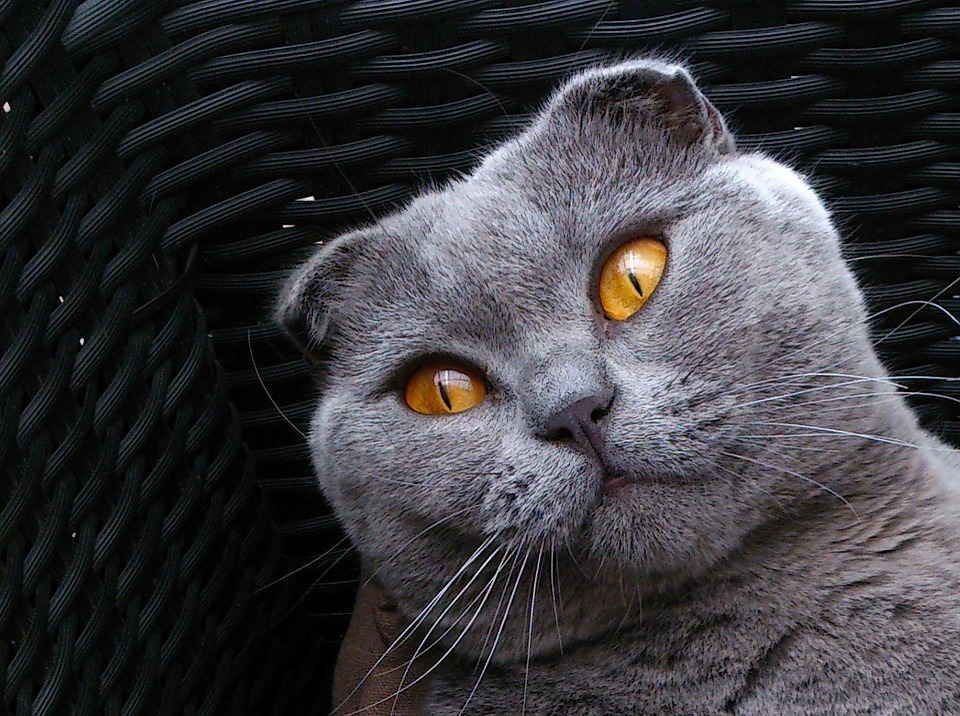The Scottish Fold is a domestic cat breed that has a natural dominant-gene mutation which affects cartilage throughout the body. This gene mutation causes its ears to fold, being forward and down towards the front of its head. Scottish Folds were originally known as lop-eared or lops, named after the lop-eared rabbit, but in 1966, its name changed to Scottish Fold. But its name varies depending on registries and they are sometimes known as Highland Fold, and Longhair Fold. If you’re interested in the Scottish Fold cat breed, then read on to know about its history and characteristics.
History
Susie, a white barn cat, was the original Scottish Fold found in 1961 at a farm near Coupar Angus in Perthshire, Scotland. Her ears had an unusual fold in the middle, making her look like an owl. When she had kittens, two of them have folded ears and one was acquired by a neighboring farmer and cat-fancier named William Ross.
In 1966, Ross registered the breed with the Governing Council of the Cat Fancy or GCCF and begun to breed Scottish Fold kittens with the help of a geneticist named Pat Turner. In the first three years of their breeding program, they had produced 76 kittens, 42 of which have folded ears and 34 with straight ears. Based on the breeding they did, they concluded that the ear mutation is because of a simple dominant gene. A female Fold named Sans was the only reproducing offspring of Susie and it was also white. Three months after Sans was born, Susie was killed by a car. All of the Scottish Fold cats share a common heritage to Susie.
The Scottish Fold breed was not accepted for showing in Europe and in 1971, the GCCF withdrew registrations because of the crippling deformity of the limbs and tail in some cats. There were also concerns about genetic difficulties and ear problems such as deafness, mites, and infection. But even though they have issues like this, they were still exported to the United States. The breed continued to be established by crossing British Shorthairs and American Shorthairs. The Fold breed no longer had the mite and infection problems. However, wax buildup in the ears may be greater than in other cats.
Characteristics of a Scottish Fold Cat
Average weight: 6 – 13 pounds
Life span: 11 – 14 years
Hypoallergenic:No
A Scottish Fold is a medium-sized cat. Males can weigh from 9 to 13 pounds while females, on the other hand, can weigh from 6 to 9 pounds. Its entire body structure, most especially its head and face, is rounded and its eyes are also large and round. Its body is well-rounded with a padded look and medium-to-short legs. It has a very short neck and its head is domed at the top. Its broadly-spaced eyes give it a sweet expression.
All Scottish Folds are born with straight and unfolded ears and their ears will begin to fold usually within about 21 days. When the kittens do not develop folded ears, they are known as Straights. The original Scottish Folds have only one fold in their ears, however, due to selective breeding, the fold in the ears increased to a double or tripped crease, causing their ears to lie flat against the head.
Scottish Folds can have either long or short hairs and they can also have any coat color or combination of colors including white. Short-haired ones have thick and soft fur while long-haired ones have exceptionally dense for around their upper thighs, toes, tail, and ears.
Scottish Folds are known to be good-natured and placid. They can become very attached to their humans and are quite affectionate by nature. They are also playful and intelligent pets. They have a habit of posing in odd positions such as flat out on the floor like a little frog, sitting up, or lying on his back with paws up in the air. They are moderately active cats and they will enjoy puzzle toys, but more importantly, those activities that involve human interaction.
They are friendly and laidback pets that’s why it is a great cat breed choice for families with children. The Scottish Fold can also live happily with cat-friendly dogs but you should slowly introduce other pets to ensure that they learn to get along together.
Caring for a Scottish Fold Cat
For shorthaired Scottish Folds, combing their coats weekly will help remove dead hair and distribute skin oil. Longhaired ones, on the other hand, might need to be groomed twice a week to prevent tangles from developing. The only other grooming needs of Scottish Folds are regular nail trimming and ear cleaning if the ears look dirty. Use a gentle cleanser of the ears recommended by a veterinarian. Use a vet-approved toothpaste to brush their teeth to avoid bad breath.
Remember to keep their litter box clean to keep their coats clean as well. Also, cats are very particular about bathroom hygiene and a dirty box might urge them to use other parts of your house as a bathroom. To avoid dangers such as attacks by dogs and other animals, diseases from other cats, and getting hit by a car, it’s better to keep your Scottish Fold as an indoor-only cat. Also, letting it go outside might put it in a risk of getting stolen.
The diet of Scottish Folds is the same as with the majority of other cat breeds. It should be high in protein with lots of healthy animal-based fats and beneficial supplements for nutritional balance. You can consult your pet’s vet to know more about optimizing a diet to keep your Scottish Fold healthy and in good shape.
Scottish Folds are highly sought-after pets today because of their unique distinctive physical traits and for being loving companions as well. In fact, Fold kittens usually cost more compared to the kittens of more common breeds.



